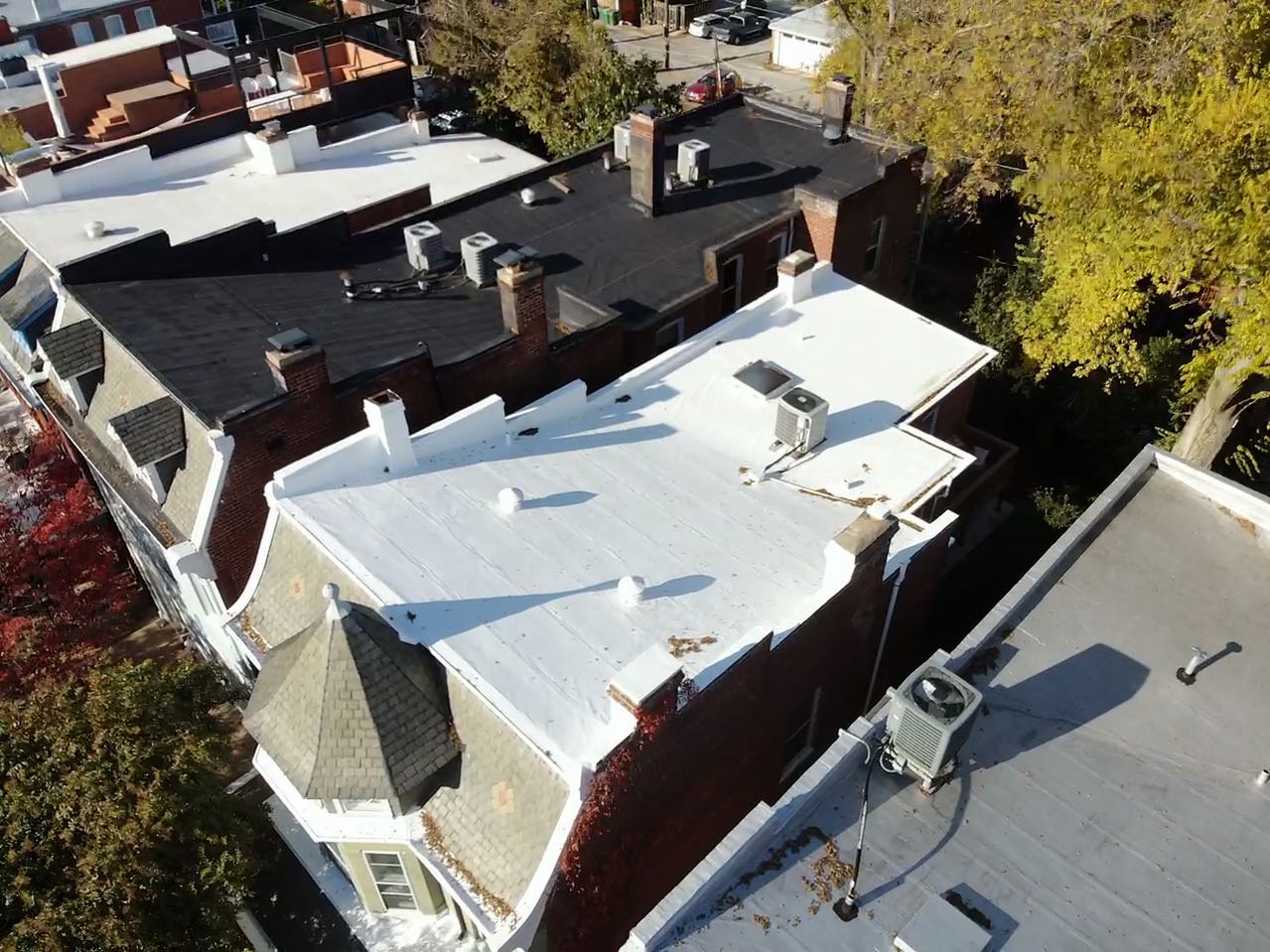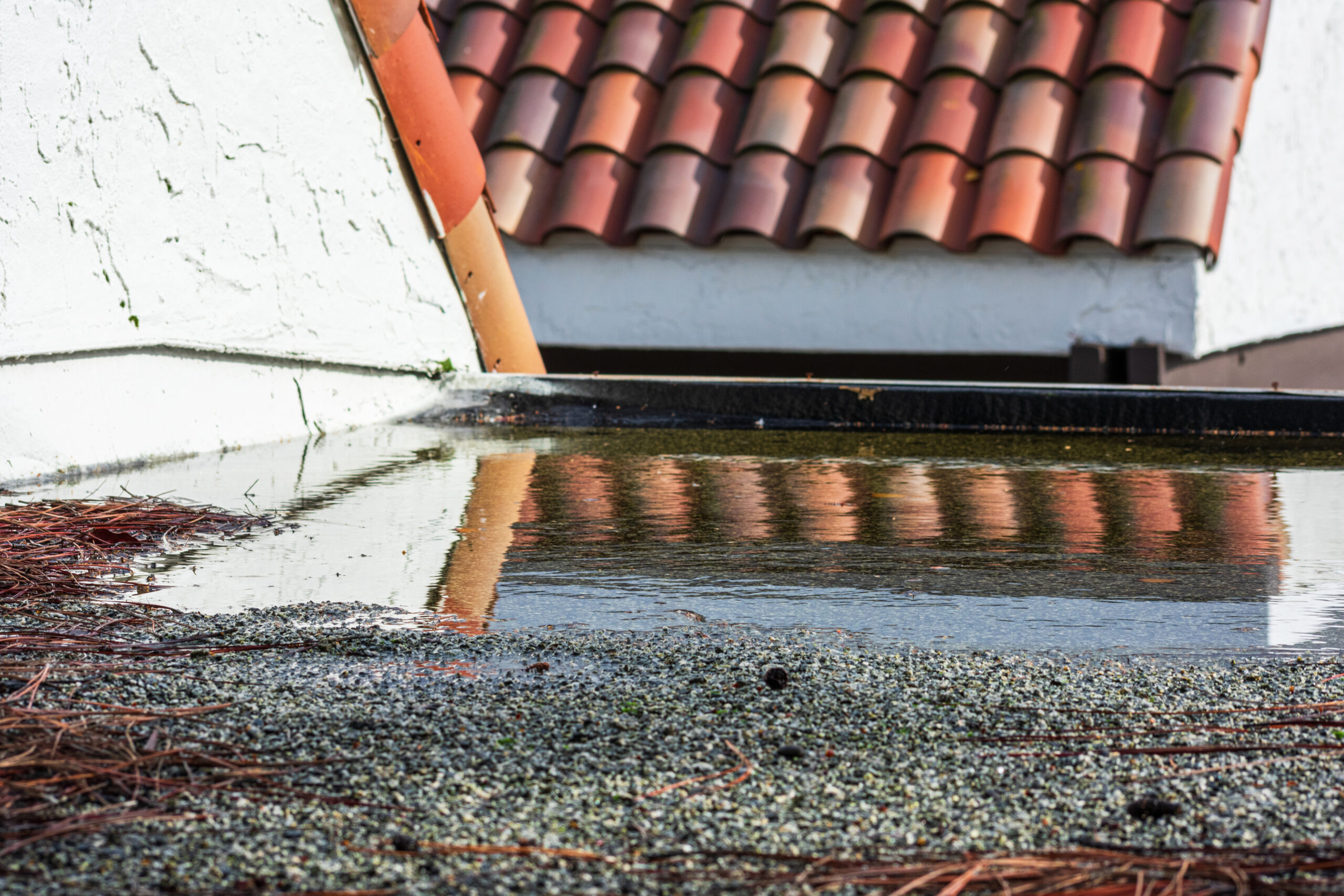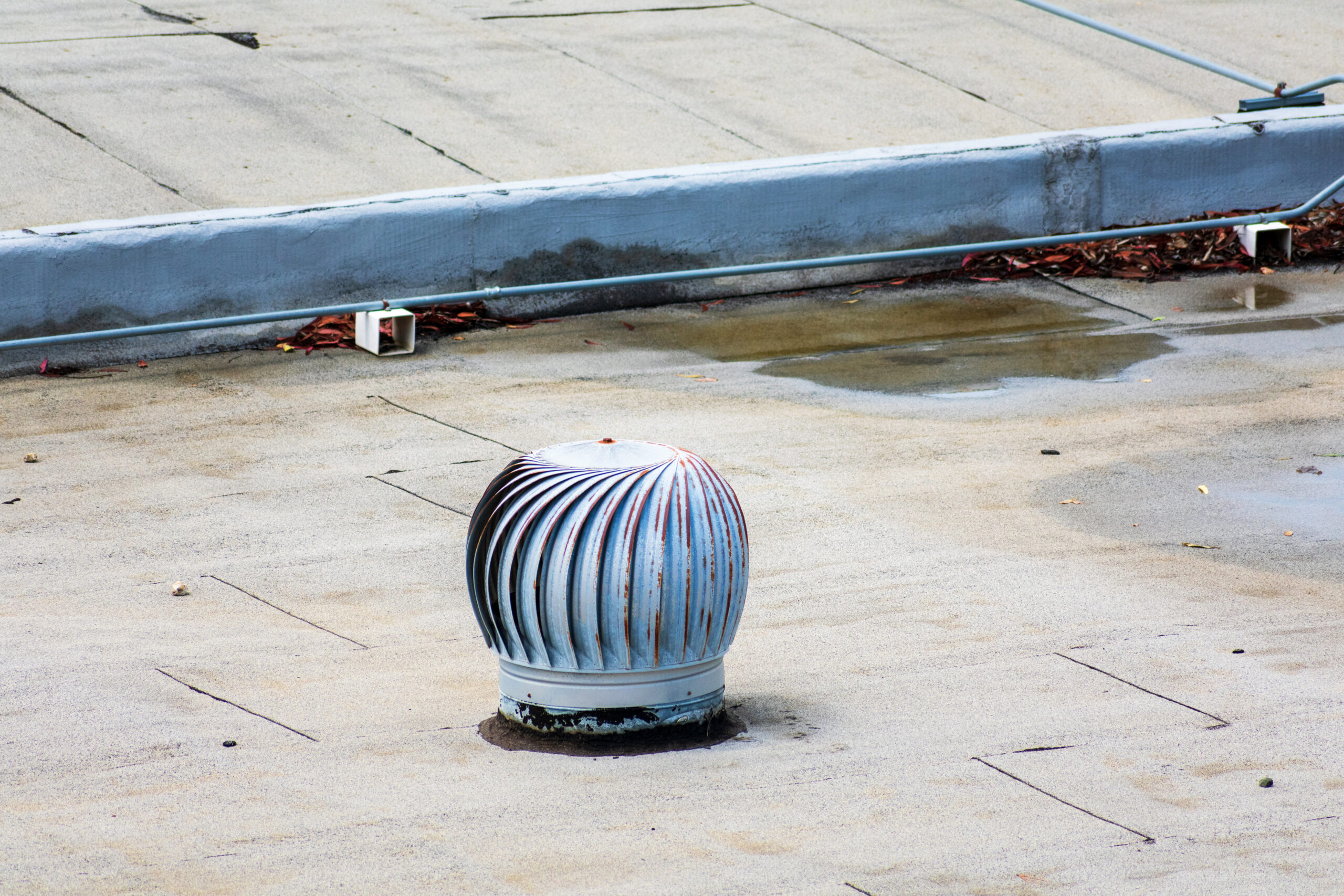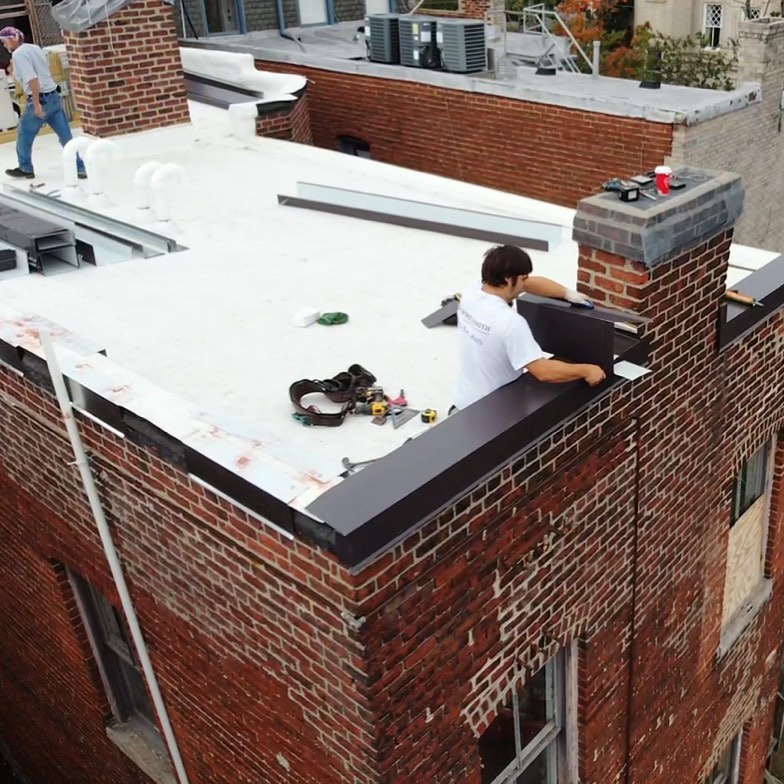Top 8 Flat Roof Problems
Flat roofs are a common feature in Richmond, particularly in historic Richmond where many buildings have been constructed with this type of roofing. However, while flat roofs offer a range of benefits, they also come with a number of potential problems that can cause significant damage and lead to costly repairs. Let’s explore the top 8 flat roof problems that are often encountered in Richmond, and what you can do to prevent them.

1. Pooling water
One of the most common problems associated with flat roofs is pooling water. This occurs when water accumulates on the roof surface and is unable to drain away due to poor drainage systems, blocked gutters, or a lack of slope. Over time, this standing water can lead to damage to the roof membrane, as well as leaks and structural damage to the building itself.
To prevent pooling water, it’s important to ensure that your flat roof has a sufficient slope to allow for proper drainage. This may involve adding additional insulation or modifying the roof structure to create a pitch. You should also ensure that your gutters and downspouts are clear of debris and functioning properly, and that any roof drains are clean and unobstructed.
2. Leaks
Leaks can be caused by a range of factors, including poor installation, damage to the roof membrane, and problems with flashing and other roof penetrations. When left unchecked, leaks can lead to significant water damage to the building’s interior, as well as mold and mildew growth.
To prevent leaks, it’s important to have your flat roof inspected regularly by a professional roofing contractor. They can identify any potential issues and make repairs before they become more serious. Additionally, make sure that any roof penetrations, such as vents and pipes, are properly flashed and sealed to prevent water from entering the building.

3. Exposure
Flat roofs are exposed to the elements on a daily basis, including UV radiation, wind, and rain. Over time, this exposure can lead to damage to the roof membrane, including cracking and brittleness. This can increase the risk of leaks and other problems.
To prevent exposure-related damage, it’s important to choose a high-quality roofing material that is designed to withstand the elements. Additionally, make sure that your roof is properly maintained, including regular inspections and cleaning to remove debris that can damage the roof membrane.
4. Splits/tears
Splits and tears can be caused by a range of factors, including exposure to the elements, foot traffic on the roof, and poor installation or workmanship.
To prevent splits and tears, it’s important to choose a high-quality roofing material that is designed to be durable and long-lasting. Additionally, make sure that any foot traffic on the roof is limited to avoid damaging the roof membrane. Regular inspections can also help to identify any areas of the roof that may be at risk of developing splits or tears.
5. Debris
Debris on the roof can cause clogged gutters, damage to the roof membrane, and pooling water. Debris can include anything from leaves and twigs to trash and construction materials.
To prevent debris-related problems, it’s important to keep your roof clean and free of any materials that could cause damage. This may involve regular cleaning and maintenance, as well as trimming back any nearby trees or vegetation that could drop debris onto the roof.

6. Blistering
Blistering is another common problem with flat roofs, particularly those that are exposed to high levels of heat and UV radiation. Blistering occurs when air or moisture becomes trapped between the layers of the roof membrane, causing bubbles or blisters to form on the surface.
To prevent blistering, it’s important to choose a roofing material that is designed to withstand high temperatures and UV radiation. Additionally, proper installation and ventilation can help to prevent moisture buildup within the roof system. Regular inspections can also help to identify any areas of the roof that may be at risk of blistering.
7. Buckling
Buckling occurs when the roof membrane becomes distorted or warped, often due to changes in temperature or moisture levels. This can lead to cracks and splits in the roof surface, as well as leaks and other problems.
To prevent buckling, it’s important to ensure that your roof is properly installed and maintained. This may involve choosing a roofing material that is designed to be flexible and able to withstand changes in temperature and moisture levels. Additionally, regular inspections can help to identify any areas of the roof that may be at risk of buckling.
8. Damaged flashing
Flashing is used to seal the edges and penetrations on a flat roof, such as around vents, skylights, and chimneys. When flashing becomes damaged or deteriorates over time, it can lead to leaks and other problems.
To prevent flashing-related issues, it’s important to ensure that your roof has high-quality flashing that is properly installed and maintained. Regular inspections can help to identify any areas of the roof where flashing may be at risk of damage or deterioration.

While flat roofs offer a range of benefits, they also come with a number of potential problems that can cause significant damage and lead to costly repairs. To prevent these issues, it’s important to choose a high-quality roofing material that is designed to withstand the elements, ensure proper installation and maintenance, and have your roof inspected regularly. By taking these steps, you can help to ensure that your flat roof provides long-lasting protection for your home or business. Don’t rely on just any roofing company to handle your flat or low-slope roof! Hammersmith Roofing & Construction is an expert in flat and low-slope roofs – give us a call today!





